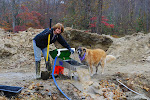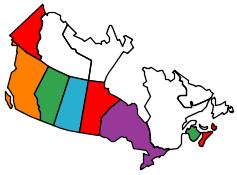It's a complicated discussion to say the least and we won't resolve it here, but there are some thoughts that might serve us all well to take into account. I think the basic goal of "Living Green" should be to use what we have wisely, diversify into other means as they become available and practical, protect that that needs protecting, and improving our own lot where ever and when ever we can. But having said that, I do think you can take some "green issues" too far. Some would have you abandon petroleum use all together. That would be foolish and counter productive. Solar is nice, but to be effective you must employ massive batteries to store the energy as it is developed. Those batteries require perhaps more energy to build than the oil they save in the process. Surely the technology will catch up at some point, but that has not happened yet and it will be a while. And disposing of those batteries when they can no longer function is perhaps the least Green thing we could possibly do at this point and time. Wind energy strikes my fancy as well, but it has many of the holdbacks of solar development. We can burn coal; it puts pollutants in the air. We can burn wood; same problem. We can develop nuclear, but we all know there is currently no prospect for safely storing the waste products which last next to forever. Green. A wonderful idea that is tough to achieve. Certainly truly living in this fashion involves some compromise with some of the comforts we have come to call "normal."
However! It's not a new concept. There are "folk" who have lived this way for centuries. Shunned mechanization in part or full. Avoided anything unnatural. Forsaken many creature comforts that demand the unsustainable consumption of resources and causes pollution. Steered clear of the modern in favor of the traditional.
I am speaking of course of the Amish people. They live simply, and close to the earth. I see similarities between the way they live and the way the Native Americans lived before the white man made things problematic and virtually impossible to continue. Close to the land. Sustained by the land and their own energy which comes back to them in the form of food and a way of live which itself is sustainable.
 Where I grew up, the Amish buggies were part of the ordinary life. I always enjoyed seeing them but was never surprised by seeing them. It is their basic form of transportation. Where do you think the rating of "horse power" comes from? A one horse power buggy can haul a small family to church, the store, to visit neighbors. The horse eats the grass that grows on the farm. The waste products of what the horse eats nourishes the soil which grows the food for the family. The family sells the excess food or hay and uses the proceeds to meet their minimal needs like material for making clothing.
Where I grew up, the Amish buggies were part of the ordinary life. I always enjoyed seeing them but was never surprised by seeing them. It is their basic form of transportation. Where do you think the rating of "horse power" comes from? A one horse power buggy can haul a small family to church, the store, to visit neighbors. The horse eats the grass that grows on the farm. The waste products of what the horse eats nourishes the soil which grows the food for the family. The family sells the excess food or hay and uses the proceeds to meet their minimal needs like material for making clothing.A two horse buggy can haul the family and the neighbors and a few of the kids from the nearby farms. Again, the horses eat the grass on the farm or the hay from the field. The by products enrich the soil which grows even better crops and the cycle continues. Very efficient. Provides all their needs, unless of course they were to need a TV, an iPod, a computer, a Ford or Chevy van, a John Deer tractor, a flashy suit with shiny shoes, a washer and dryer or even electricity!- all of which they do not need, do not want, and do not have. They live a simple life. They live Green. It is hard to do. It is a hard life. But for them it is the right life and a good life and we would do well to take a serious look at what Green is really all about.
 There are exceptions to every rule. But there are also some basics that are worth mentioning. Most Amish live on farms that are from 40 to 60 acres. That is enough land, God willing, to grow enough of a crop to feed the family with a small left over for sale, and graze 40 to 60 head of dairy cattle. The milk from the cows is generally the cash crop of the family and again helps to provide nourishment for the family. A farm that size is large enough to provide for the family and still small enough to be worked by "horsepower." Horses, as we have seen, provide the transportation. They also power the mowers for cutting the hay, tilling and harrowing the fields, and hauling the crops back to the barn when the harvest is ready.
There are exceptions to every rule. But there are also some basics that are worth mentioning. Most Amish live on farms that are from 40 to 60 acres. That is enough land, God willing, to grow enough of a crop to feed the family with a small left over for sale, and graze 40 to 60 head of dairy cattle. The milk from the cows is generally the cash crop of the family and again helps to provide nourishment for the family. A farm that size is large enough to provide for the family and still small enough to be worked by "horsepower." Horses, as we have seen, provide the transportation. They also power the mowers for cutting the hay, tilling and harrowing the fields, and hauling the crops back to the barn when the harvest is ready.The beauty of the countryside in what we lovingly call "Dutch" country is breathtakingly pastoral. I found these gents sitting on a bench in Lancaster County contemplating the beauty of the Amish farm land before them. If you can sit and look out over the farm lands and watch the plows pulled by horse teams in the field and not get relaxed and happy, you probably have little possibility of achieving either any time soon.
 Not only the life of these people is simple, but so too is their clothing. Uniform-like in its "uniformity" and nearly always black and white- no flashing colors here- it is pleasing to the eye and a treat to see, especially on the children as they come and go to school, to work, to church in their bonnets and straw hats...
Not only the life of these people is simple, but so too is their clothing. Uniform-like in its "uniformity" and nearly always black and white- no flashing colors here- it is pleasing to the eye and a treat to see, especially on the children as they come and go to school, to work, to church in their bonnets and straw hats... On a hazy morning in April, this Amish farm boy plows the field with his eight horse power machinery...
On a hazy morning in April, this Amish farm boy plows the field with his eight horse power machinery... At the Shady Maple, the largest of the area farmers' markets, there is plenty to see, buy, sell....or eat. We visit the farmers' markets everywhere we go. These are some of the best. Farm produce is cheaper here than anywhere else I have ever seen. It is produced at a lower cost by simple means and thus can sell for less at market. A simple, a Green, concept!
At the Shady Maple, the largest of the area farmers' markets, there is plenty to see, buy, sell....or eat. We visit the farmers' markets everywhere we go. These are some of the best. Farm produce is cheaper here than anywhere else I have ever seen. It is produced at a lower cost by simple means and thus can sell for less at market. A simple, a Green, concept! Work is a family affair. If you are old enough to eat, you are nearly old enough to work in this community. See the kids stroll out to meet the work team in the field.
Work is a family affair. If you are old enough to eat, you are nearly old enough to work in this community. See the kids stroll out to meet the work team in the field. Wash day is every day when there is sunshine. Solar Dryer! How Green is that?
Wash day is every day when there is sunshine. Solar Dryer! How Green is that? I always wondered what it was like to ride in one of those carriages!
I always wondered what it was like to ride in one of those carriages! We contracted with an Amish gentleman to take us for a ride in his buggy. He spoke openly and freely about his lifestyle. About farming methods. About waste in our society. This was a rare and candid access to this relatively closed society. We visited a farm on our jaunt in the carriage (photos below) and learned a lot. In all the years I spent here growing up, I never had this close of an access to the culture of the Amish. It made for an eye opening and fascinating day down on the farm.
We contracted with an Amish gentleman to take us for a ride in his buggy. He spoke openly and freely about his lifestyle. About farming methods. About waste in our society. This was a rare and candid access to this relatively closed society. We visited a farm on our jaunt in the carriage (photos below) and learned a lot. In all the years I spent here growing up, I never had this close of an access to the culture of the Amish. It made for an eye opening and fascinating day down on the farm. "I'll show you how, little one, then you try it..."
"I'll show you how, little one, then you try it..." The first alfalfa cutting of the year...in a perfect year you can get as many as five cuttings...
The first alfalfa cutting of the year...in a perfect year you can get as many as five cuttings... "Welcome to our humble home"
"Welcome to our humble home" Our driver and guide gave permission for a photo (and all of the others for that matter). As a general rule, the Amish prefer not to have their picture taken. Certainly not without permission!
Our driver and guide gave permission for a photo (and all of the others for that matter). As a general rule, the Amish prefer not to have their picture taken. Certainly not without permission! My artsy shot: "Amish Turn Signal"
My artsy shot: "Amish Turn Signal" The Greener we hope to live in this world the more sh-- we might have to put up with. Always remember the basic Green principle: Turn the sh-- into fertilizer and make it work for you! Spread it around....
The Greener we hope to live in this world the more sh-- we might have to put up with. Always remember the basic Green principle: Turn the sh-- into fertilizer and make it work for you! Spread it around....

This is the Green version of "If life gives you lemons, make lemonade!"









No comments:
Post a Comment